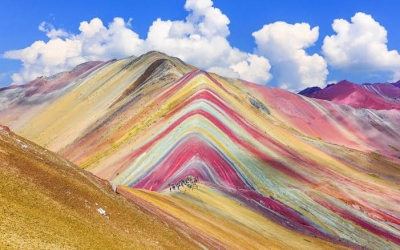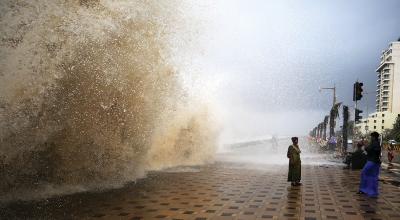
A rise in sea level may put some of the Indian cities, including Mumbai, Chennai and Kolkata, in the flood-risk zone, and it could affect a total of 36 million people in the country by 2050, according to a research report by the New Jersey-based science organisation Climate Central. By 2100, this number could increase to 51 million. Parts of these coastal cities could be completely wiped out, the report said.
Showing that many of the world’s coastlines are now for lower than earlier, the report projected that worldwide, some 300 million people could be affected by 2050. The threat is particularly concentrated in six Asian countries: China, India, Vietnam, Thailand, Indonesia and Bangladesh.
Sea-level rise and flooding could have profound economic and political consequences within the lifetimes of people alive today, showed the findings of the study.
Even if emission is zero
According to another study published last month, the dramatic rise in sea levels will continue even if the world manages to slash greenhouse gas emissions to zero by 2030. Emissions between 2015 and 2030 would be enough to raise levels by 8 cm by 2100, according to research by experts based in Germany.
The average sea level is expected to swell by at least a metre by 2300 in the extremely unlikely event that greenhouse gas emissions fall to zero in the next 11 years.
If planets heats up further
In the worst-case scenario – in which the planet heats up by 5 degrees Celsius in the next 80 years – melted ice could raise sea levels worldwide by more than 6.5 feet, according to a study published in May 2019. That could result in a loss of 6,91,120 square miles of land, the report said. That’s an area larger than France, Germany, Spain and the U.K. combined.
The water could swamp major coastal cities such as New York and Shanghai. Small Pacific island nations such as Vanuatu would be rendered uninhabitable or disappear entirely.
In Earth’s geological past, sea level has risen and fallen dramatically. For instance, during the last Ice Age, ice covered the planet and sea level was at least 394 ft lower than what it is today. And during the Eocene – 40 million years ago, the Earth was almost ice-free and the sea level was around 230 ft higher than today.
These changes are part of Earth’s natural glacial cycles and have occurred over millions of years. But the current sea-level rise is caused mainly due to human activities.
The burning of fossil fuels, deforestation, decomposition of waste in landfills and livestock have released enormous amounts of greenhouse gases into the atmosphere. These emissions have caused the Earth’s surface temperature to rise, causing global warming, which directly contribute to sea-level rise.
Picture Credit : Google






